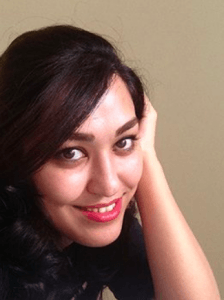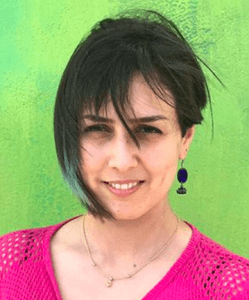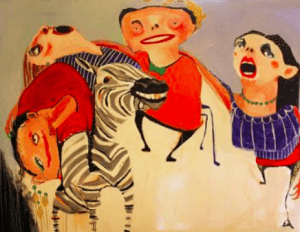By Andrea Swiedom Contributing Writer
“Inner Fragments” is a collection of works by 16 female Iranian artists that were curated by Mahsa Soroudi and Parisa Ghaderi, who hoped to inform Western audiences about Iran’s curre
nt art scene and overcome cliche depictions of Iranian art.
Many of the pieces, which range from paintings to sculptures and mixed media, contain vivid colors and work subtlety to convey their meaning. The collection is comprised of all female artists and provides a nuanced look into the modern Iranian woman, but as the curators stressed, the works should communicate relatable identities and feelings to all audiences.
“In all of [the pieces] you can find a trace of the gender role, how [the artists] define it and how they’re trying to explore it and make their way out of it,” said Ghaderi. “And, just trying to portray what it means to them.”
While these women are at the forefront of Iran’s contemporary art scene, they are virtually unknown to Western audiences. The curators explained that mainstream media continues to portray styles from over 30 decades ago as current, Iranian art. This has created a stereotype of black and white images, veiled women and very direct messages.
“The artists born in the 60s experienced the Iranian revolution and then, the Iran and Iraq war,” said Soroudi. “So they created a lot of art work related to the war and the revolution and the horrors after that.”
The Inner Fragments collection is quite the contrast from that period. “You don’t see that direction, you see a lot of exploration that their art is doing. There’s nothing in the artwork where you say, ‘okay, I can see hijab,’” said Soroudi. The contemporary artists grew up in a
different environment than their wartime counterparts. Their experiences include isolation, censorship and international sanctions that have affected their daily lives.
These challenges have caused artists to develop understated styles. “They have to be really creative to be able to show their work because if you want to show everything in the painting, then you can’t get the galleries to exhibit it,” said Soroudi.
Despite their subtlety, some of the works in Inner Fragments are still not allowed to be shown in Iran, but the curators are thrilled with the opportunity to show the art in rural Maine. “We decided to have a traveling show because our main goal is to take the show to the places that are less exposed to such art,” said Ghaderi.
Ann Bartges, Assistant Director of Visual Arts, went to graduate school with Ghaderi and learned about Inner Fragments last year when she invited Ghaderi to campus as a visiting artist. Bartges saw an opportunity shortly thereafter to bring the exhibit to UMF. “Just last year I started as the Director of the Arts Center and as soon as I was offered that position, I thought, ‘Oh my gosh, we have the opportunity to bring that show here!’”
The exhibit is currently on display in the Emery Community Art Center until November 1st.



